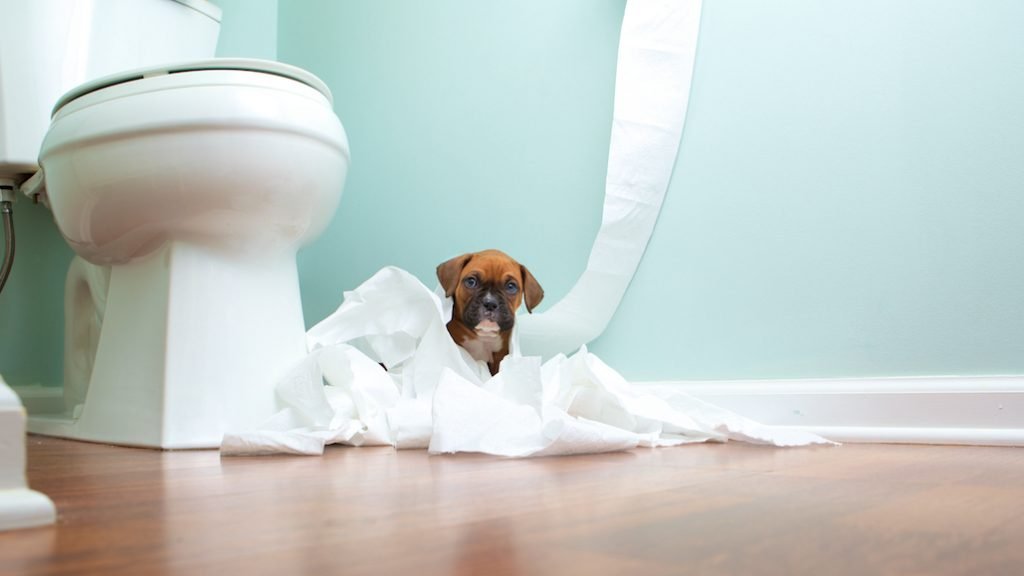Canine Toilet Training
 Jackie Neff/Shutterstock.com
Jackie Neff/Shutterstock.comDogs can soil the house for a number of reasons. This includes puppies never being trained, incorrect methods being used or simply a break-down in training due to stress. However, some medical problems can cause inappropriate soiling of the house and these must be ruled out by the veterinary surgeon before considering any form of behaviour training.
Things to avoid:
- Never use physical punishment when the dog has an accident in the house as this can raise their anxiety and make it more difficult to house-train.
- If you find a mess in the house that the dog has done previously, do not punish them.
- Avoid cleaning the area with strong-smelling cleaners as these can act as a marker which can encourage them to use the spot again. Use odourless cleaners after you have thoroughly cleansed the area (refer to cleaning methods handout).
- Avoid giving your dog the opportunity to make mistakes. Keep them supervised, take them out regularly and time feedings so that they are not restricted after meals.
House training method:
- It is usual for dogs to want to toilet about 20 minutes after a meal or after a period of rest.
- Take the dog to a toileting area at these times and regularly every 90-120 minutes during the day (more often for puppies).
- When you have noticed a general pattern, you can time these sessions more specifically.
- Designate a toilet area. It is better to select somewhere where the dog has shown a preference for.
- If you have to clean up after the dog in the house, wring the cloths/mop out in this chosen outside spot to create a latrine area.
- At the appropriate times take the dog to the garden and walk him/her to the spot, circling around it a couple of times.
- Stand fairly still and quietly use a command such as ‘toilet’ or whatever word you prefer.
- Wait for up to 5 minutes.
- If your dog does toilet wait until they have almost finished and immediately praise them, giving a reward such as a food treat.
- Let your dog off the lead and play for a few minutes.
- If the dog does not toilet, simply lead them back to the house, leaving the lead on. Stay around to avoid injury and also to react quickly if they start to soil in the house. After a short time, try taking the dog out again going through the same routine.
- If the dog does start to toilet in the house, say ‘No’ in a calm voice and lead them outside to finish off, remembering to reward them for doing so.
- For some situations a house crate can be used as some dogs do not like to toilet at close proximity. However these should be used with caution and not used as an alternative to proper house-training. Expert advice must be sought by the behaviourist.
- As you make progress with this training, raise the level of your voice to a normal tone when you give the command.
- Dogs generally will respond to this verbal cue and associate it with going to the toilet after regular and consistent training.
Remember that every dog is an individual and some take longer to train than others, particularly if they have previously been wrongly trained or have grown up without any training. However, it usually takes between 4-5 weeks for most dogs to start to respond.